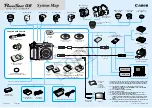
RMC-675/RMC-673
38
Functional Options
Figure 33.
ALC Advanced Set
•
ALC Window
These parameters define the rectangular Region of Interest (ROI) that will be used to calculate the ALC exposure
level. The user defines the upper left and bottom right corner of the ROI using X & Y coordinates. The ROI can
target the center of the image, or can be set to avoid a certain portion of the image so that its light value will not
affect the ALC function. A window display can be turned on to help the user identify his ROI, but it should be
always set to off during normal operation. The normal default of the ALC window is 90% of the full frame image.
•
ALC Mode
This allows the user to select the type of algorithm for the ALC function.
Average: The ALC level is based on the calculated average value of the selected window.
•
Bright Speed
This selection sets a time value to wait a pre-selected time before the ALC will adjust when the scene is changing
from dark-to-bright. For example, if the average scene level is 50 and it immediately changes to 100, the camera
will verify that the scene has stayed at 100 for the pre-selected time before it will adjust the ALC.
•
Dark Speed
This selection sets a time value to wait a pre-selected time before the ALC will adjust when the scene is changing
from bright-to-dark. For example, if the average scene level is 100 and it immediately changes to 50, the camera
will verify that the scene has stayed at 50 for the pre-selected time before it will adjust the ALC.
•
Impulse Filter
This selection sets a time value to wait a pre-selected time before the ALC will adjust when the scene is changing.
It acts like a hysteresis loop for the system.
•
Electronic Shutter
Setting the ALC Mode to “automatic” in the main control window causes the camera to begin working to maintain
the proper exposure, based on the settings in the ALC Level and AGC Max Gain boxes. When the Electronic
Shutter box is also checked, the Automatic Exposure Control (AEC) function of the ALC mode is enabled, causing
the electronic shutter to work together with auto gain to achieve the optimum ALC level. If this box is unchecked,
only auto gain is used, which may be insufficient to achieve the desired ALC level. This configuration (ALC on,
Electronic Shutter off) is normally used only when an auto-iris lens is connected to the camera. This allows auto
gain and auto iris to control the exposure, while eliminating the chance of any conflicts between the auto shutter
and auto iris actions.
5.1.3
White Blemish Compensation (Option OP2-5)
This optional feature allows the user to enable or disable white blemish compensation. The camera can come pre-
calibrated with the white blemishes mapped and saved into the flash memory. Once calibrated, the camera will
then interpolate and substitute for the white pixels.
Summary of Contents for RMC-673
Page 2: ......
Page 13: ...Hardware Introduction 13 RMC 675 RMC 673 Figure 1 RMC 675 RMC 673 System Configuration...
Page 81: ......
















































